Presentation
Chronic congenital nasal congestion with inability to pass a flexible scope through either turbinate.
Patient Data
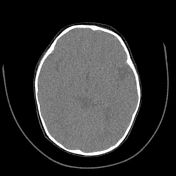

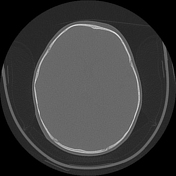

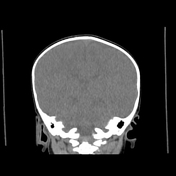

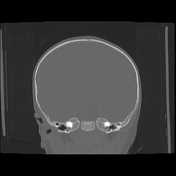

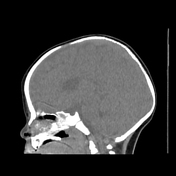

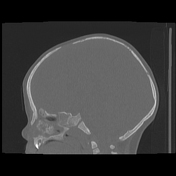

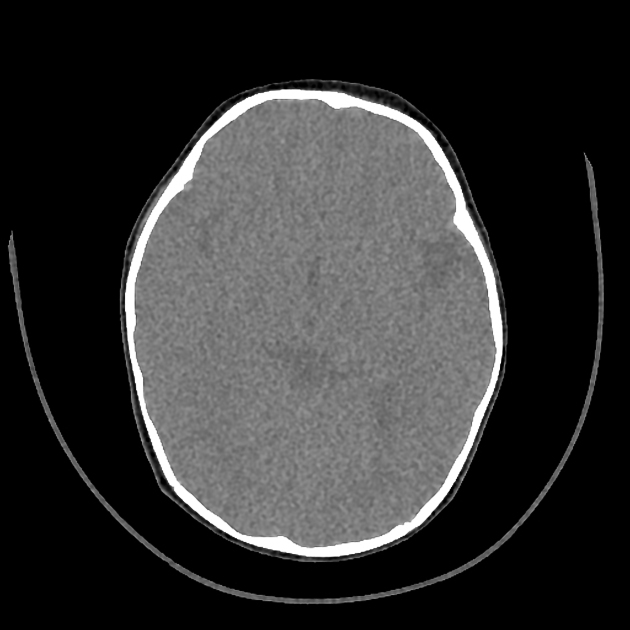
There is an expansile ossific mass in the right maxillary sinus with extension into the nasal cavity along with remodeling of the right ethmoid air cells. The mass measures 3.3 x 2.7 cm. The nasal septum deviates to the left. It shows internal calcifications.
The mass was initially suggestive of a juvenile ossifying fibroma.


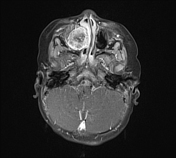

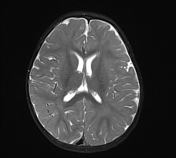

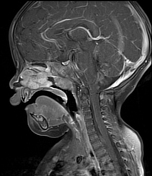

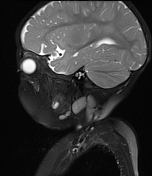

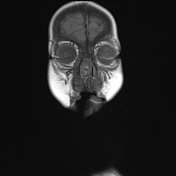

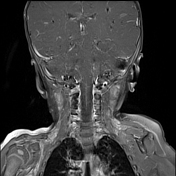



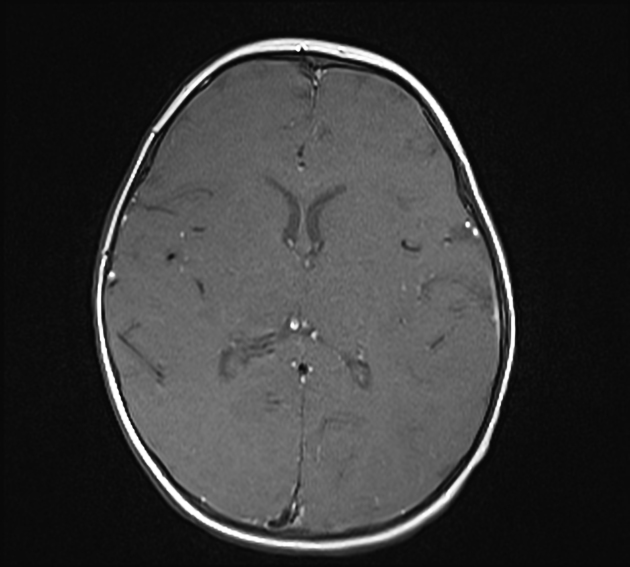
There is a heterogeneous enhancing mass in the right maxillary sinus that measures 2.8 x 2.3 x 2.4 cm. There is associated remodeling and expansion of the sinus and extension into the right middle and inferior turbinates and ethmoid air cells. Leftward deviation of the nasal septum and superior bowing of the inferomedial right orbital wall are present.
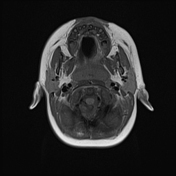

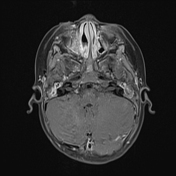



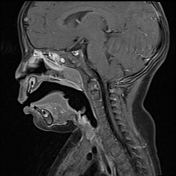

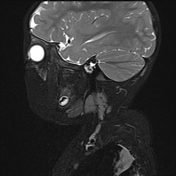

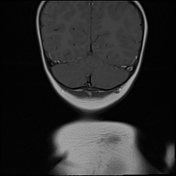

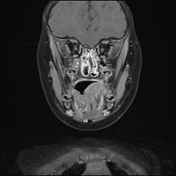

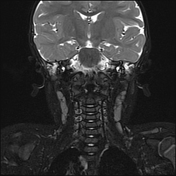

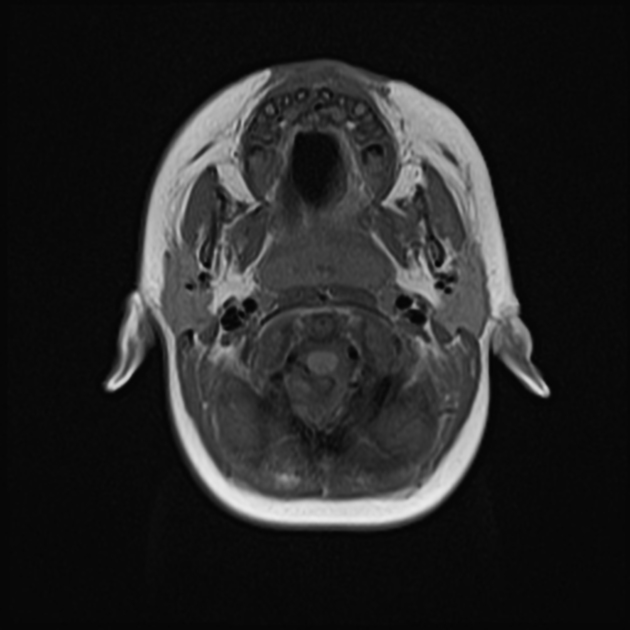
Postsurgical changes related to a prior right open Caldwell-Luc and endoscopic medial maxillectomy removal of the right maxillary sinus mass are present. There is a residual T1 hypointense, T2 hyperintense, enhancing soft tissue in the surgical bed, which is ill-defined. Residual or recurrent disease cannot be excluded.
Pathology Report
"Diagnosis
Right nasal and maxillary contents (resection): Nasal chondromesenchymal hamartoma
Clinical Information
Nasal chondroma mesenchymal hamartoma
Specimens
Right nasal and maxillary contents
Gross Description
Received in formalin is a 2.5 gram, 3.5 x 3 x 0.8 cm aggregate of bony fragments admixed with possible cartilaginous tissue (Te, 3 caps, wrapped, decal)
Microscopic Description
My electronic signature on this report indicates that I have personally reviewed the microscopic slides generated in the examination of this specimen. The diagnosis is based on the gross examination and this microscopic review."
Case Discussion
Nasal chondromesenchymal hamartoma (NCMH) is a rare, pediatric benign tumor that most commonly affects children under one year of age 1-3. Patients often present with symptoms based on tumor location and compression on adjacent structures. Recurrence after surgery is common in incomplete resections due to its infiltrative nature. In addition, there is a documented association between NCMH and the DICER1 familial tumor susceptibility syndrome. This syndrome increases the risk of other tumors including Sertoli-Leydig tumors, granulosa cell tumor, gynandroblastoma, ovarian sex cord-stromal tumor, cystic nephroma, pleuropulmonary blastoma, thyroid goiter, etc. Our case has not undergone genetic testing, but a consult was placed for further workup.




 Unable to process the form. Check for errors and try again.
Unable to process the form. Check for errors and try again.